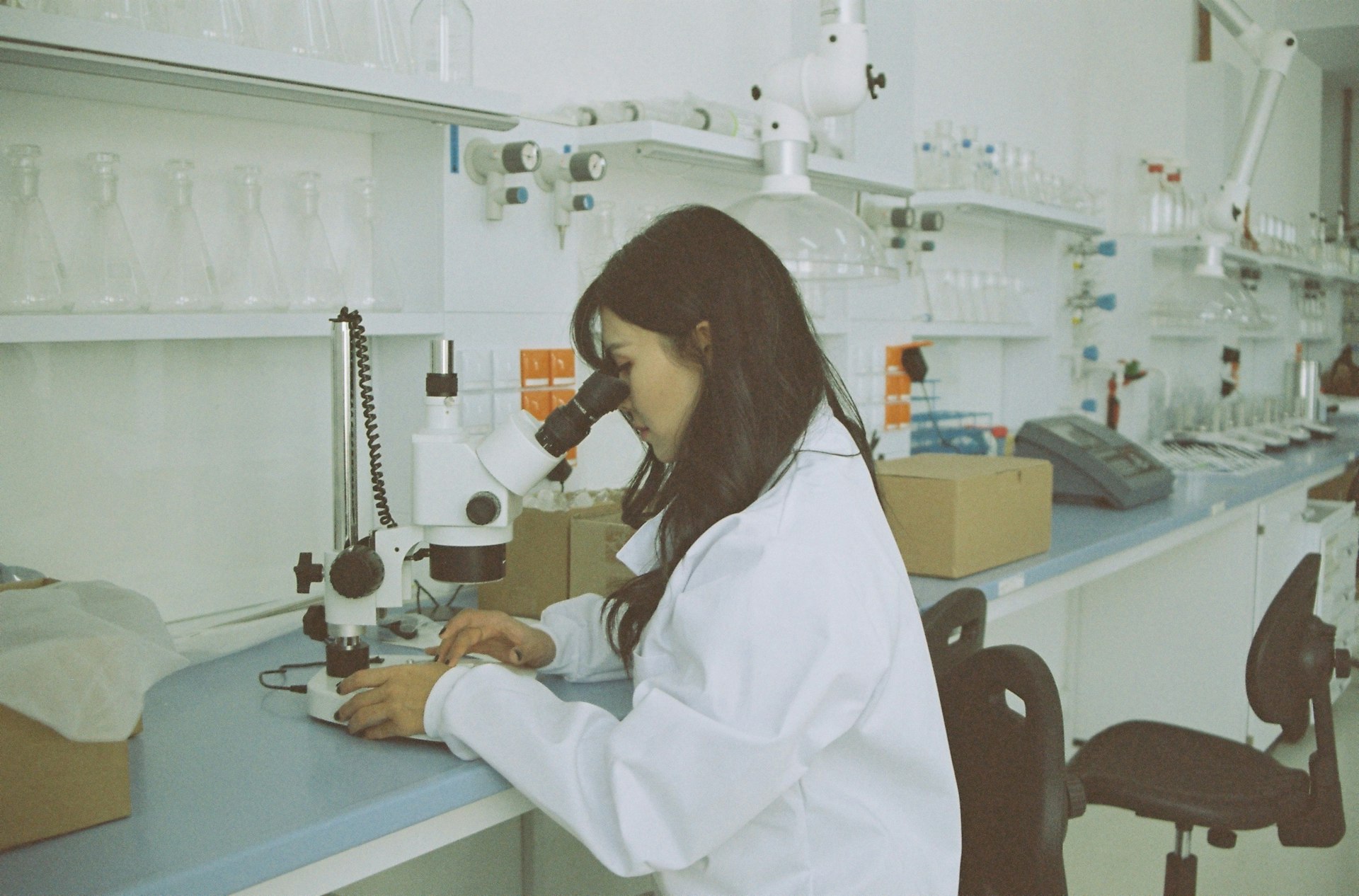Transforming Drug Discovery: How Artificial Intelligence Accelerates Innovation and Patient Outcomes


Photo by Diane Serik on Unsplash
Introduction: The New Era of Drug Discovery
The process of bringing new medicines from concept to clinic has traditionally been slow, costly, and fraught with risk. Recent advances in artificial intelligence (AI) are dramatically reshaping this landscape. AI now plays a vital role at every stage of drug discovery, from target identification through clinical trials, promising faster timelines, lower costs, and improved success rates. This article explores the core functions of AI in drug discovery, presents real-world examples, discusses practical implementation, and addresses the challenges and future potential of these technologies.
The Traditional Drug Discovery Process: Challenges and Limitations
Drug discovery has long been a complex and expensive endeavor. To bring a single drug to market can take more than a decade and cost upwards of $2 billion, with high failure rates often exceeding 90% in clinical trials [1] . Traditional approaches rely heavily on trial-and-error, manual data analysis, and incremental improvements. These methods are slow to adapt to the exploding volume of biomedical data and often struggle to identify effective compounds for complex diseases.
AI’s Role in Modern Drug Discovery
Artificial intelligence enables pharmaceutical researchers to analyze vast datasets, recognize patterns, and make predictions that would be impossible or prohibitively time-consuming with conventional methods. The primary roles of AI in drug discovery include:
- Target Identification and Validation: AI algorithms sift through genomic, proteomic, and clinical data to pinpoint promising biological targets for new drugs [1] .
- Compound Screening and Lead Optimization: Machine learning (ML) models predict how millions of compounds will interact with a given target, identifying hits and optimizing leads with far greater speed and accuracy [2] .
- Drug Design: AI is now used to design entirely new molecules with desired properties, leveraging deep learning to propose drug candidates with optimal solubility, efficacy, and safety profiles [2] .
- Predicting ADMET Properties: AI models can forecast absorption, distribution, metabolism, excretion, and toxicity (ADMET), reducing the risk of late-stage failures [4] .
- Clinical Trial Design and Recruitment: ML techniques help select suitable patient cohorts and optimize trial protocols, which can halve recruitment and execution times [3] .
Examples and Case Studies
Several companies and research groups have demonstrated the real-world impact of AI-driven drug discovery:
- AlphaFold by DeepMind: This AI system predicts protein structures with unprecedented accuracy, opening new possibilities for rational drug design and personalized medicine. AlphaFold’s insights into protein shapes have already accelerated the identification of new therapeutic targets [2] .
- Talus Bio: By combining proprietary lab data with AI models, Talus Bio rapidly identifies drug candidates for “undruggable” transcription factors, a feat previously thought unachievable [3] .
- Genentech’s Lab-in-a-Loop: This system continuously integrates experimental results with AI predictions, streamlining the iterative process of drug candidate selection and optimization [5] .
Recent studies show that AI-developed drugs in phase 1 clinical trials have success rates of 80-90%, compared to 40-65% for traditional methods [1] .
Step-by-Step: How to Implement AI in Drug Discovery
Organizations looking to adopt AI in drug discovery can take the following actionable steps:
- Assess Data Infrastructure: Ensure robust systems are in place to store, manage, and curate large datasets from laboratory experiments and clinical studies.
- Choose the Right AI Tools: Evaluate available AI solutions or partner with AI-driven drug discovery firms. For academic or early-stage groups, consider open-source tools and collaboration with bioinformatics specialists.
- Integrate AI and Lab Work: Use a “lab-in-a-loop” approach, where AI predictions are tested experimentally, and results are fed back to refine models [5] .
- Train Staff: Invest in upskilling your workforce in data science, machine learning, and bioinformatics to leverage AI tools effectively.
- Start Small, Scale Fast: Pilot projects in target identification or compound screening can demonstrate value and guide wider adoption.
For those seeking guidance or collaboration, you may explore partnerships with established research institutes, join consortia focused on AI in life sciences, or contact leading academic medical centers that have AI-driven translational research programs. Search terms such as “AI drug discovery partnerships,” “machine learning drug design collaborations,” or “AI-enabled clinical trial optimization” can help identify relevant opportunities.

Photo by National Institute of Allergy and Infectious Diseases on Unsplash
Challenges and Solutions
While AI brings transformative advantages, several challenges remain:
- Data Quality and Diversity: AI models are only as good as the data they are trained on. Inconsistent, biased, or incomplete datasets can lead to unreliable predictions. Solutions include standardizing data collection protocols and collaborating across organizations to pool diverse datasets [4] .
- Interpretability: Deep learning models can act as “black boxes,” making it hard to understand their decisions. The rise of interpretable machine learning (IML) addresses this by providing explanations for AI-driven predictions.
- Regulatory and Ethical Considerations: The use of AI in healthcare must comply with regulatory standards and ethical guidelines. Engaging with regulatory agencies early in the process can help ensure compliance.
- Integration with Existing Pipelines: Adapting AI tools to legacy laboratory information systems can require significant investment and process redesign.
Alternative approaches include using hybrid models that combine traditional statistical methods with AI, and leveraging cloud-based platforms for scalable, secure data analysis.
The Future of AI in Drug Discovery
The influence of AI on drug discovery is expected to grow rapidly. As computational power increases and more data becomes available, AI models will become even more accurate and efficient. The next frontier includes AI-driven personalized medicine, where treatments are tailored to individual genetic profiles, and the application of generative models to create entirely new classes of therapeutics.
Many organizations are also exploring the use of AI to repurpose existing drugs for new indications, a strategy that can reduce development time and costs. With ongoing advancements, AI is set to become an indispensable tool in the search for safer, more effective medicines.
Accessing AI-Driven Drug Discovery Resources
If you or your organization wish to access AI-powered drug discovery services or opportunities, consider the following steps:
- Contact major pharmaceutical companies with AI partnerships or dedicated AI research divisions.
- Collaborate with academic medical centers or research institutes known for computational biology.
- Search for public-private consortia focusing on AI in life sciences (e.g., by searching “public-private partnership AI drug discovery”).
- Reach out to established AI drug discovery companies for pilot project opportunities.
- Attend industry conferences or webinars on AI in healthcare and connect with experts in the field.
Some professional societies, such as the American Association for Cancer Research (AACR) or the New York Academy of Sciences, periodically host panels and events on this topic. You can search for these events using keywords like “AI drug discovery symposium” or “machine learning in pharmaceutical research conference.” For guidance on regulatory requirements, visit the official website of the U.S. Food and Drug Administration (FDA) and search for “AI in drug development guidance.”
References
- [1] Association of Community Cancer Centers (2024). Harnessing Artificial Intelligence in Drug Discovery and Development.
- [2] Blanco-González, A. (2023). The Role of AI in Drug Discovery: Challenges and Opportunities. PMC.
- [3] Wyss Institute, Harvard (2024). From Data to Drugs: The Role of Artificial Intelligence in Drug Discovery.
- [4] Paul, D. (2020). Artificial intelligence in drug discovery and development. PMC.
- [5] Roche (2024). AI and machine learning: Revolutionising drug discovery and transforming patient care.




